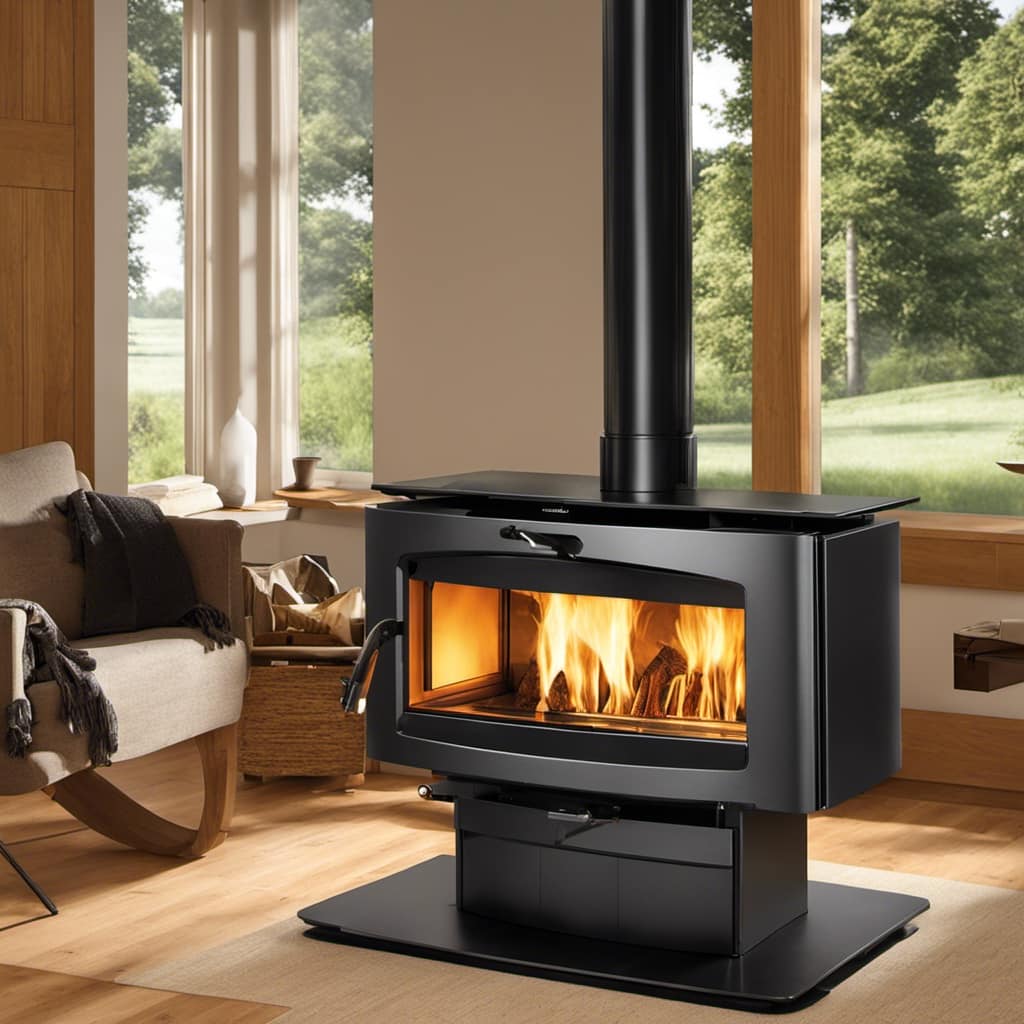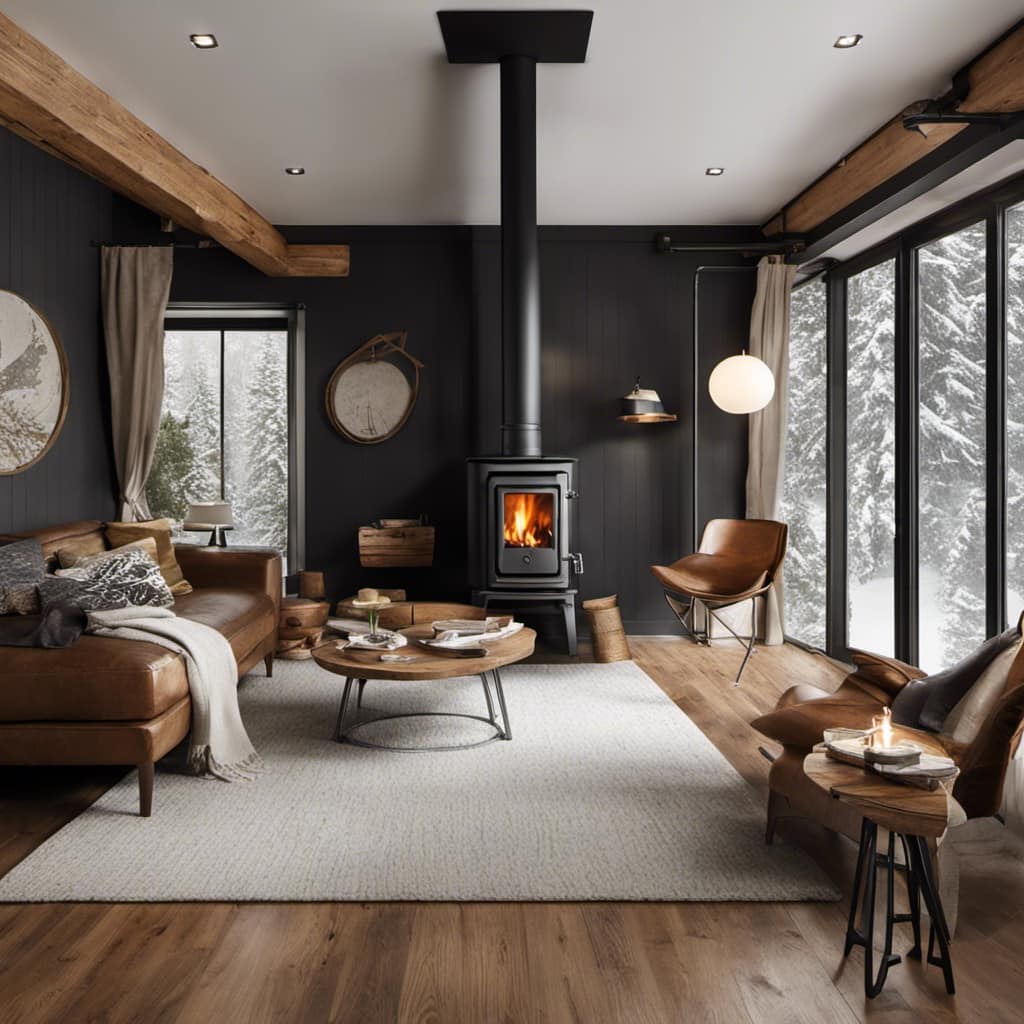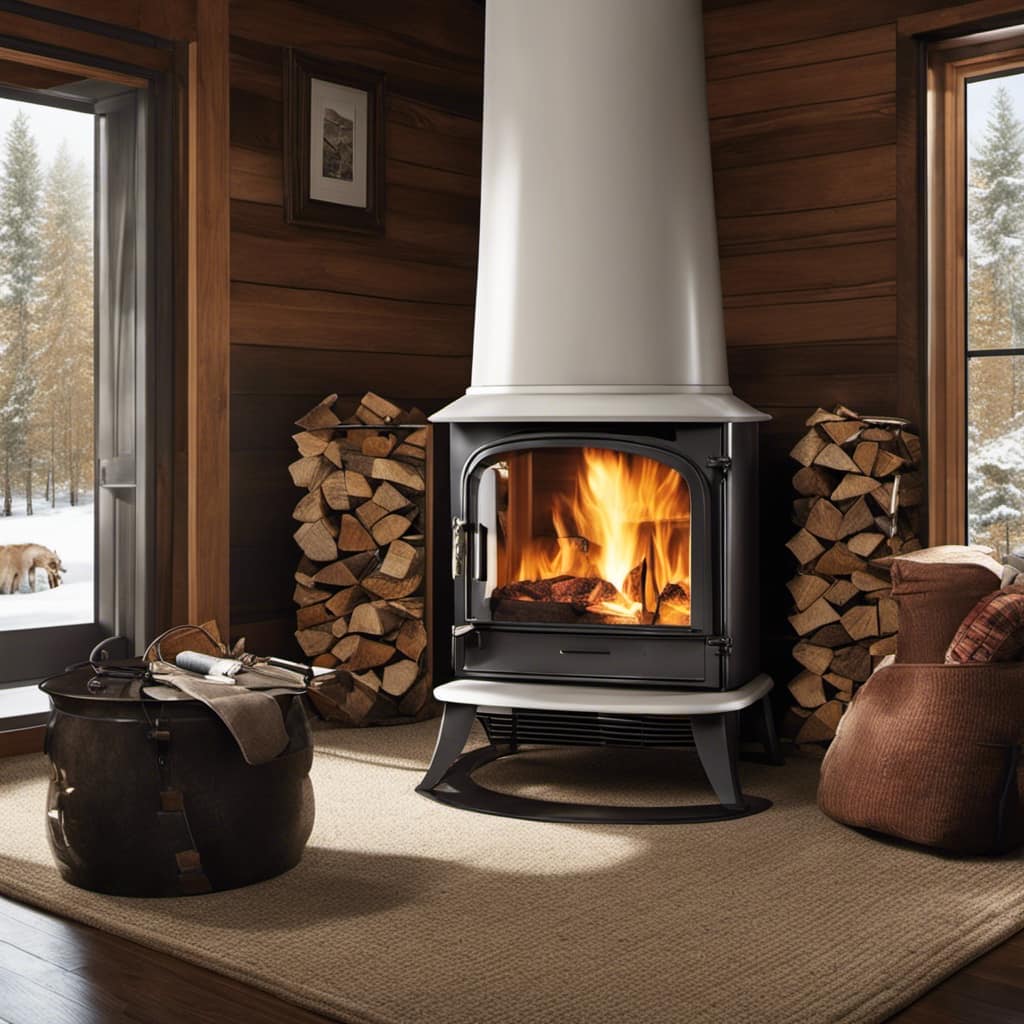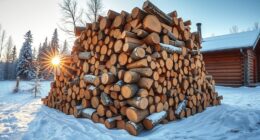So, you’ve purchased a wood stove, right? I understand it can be a bit tricky to operate. But don’t worry, my friend, I’m here to help you out.
In this article, I’ll walk you through the ins and outs of mastering the art of wood stove control. From understanding the damper to troubleshooting common issues, you’ll have all the knowledge you need to keep that fire burning just the way you like it.
Let’s get started, shall we?
Key Takeaways
- The damper regulates airflow and heat output in a wood stove.
- Adjusting airflow helps control heat output and fuel consumption.
- Secondary combustion improves fuel efficiency and reduces emissions.
- Proper maintenance and troubleshooting are essential for proper functioning of a wood stove.
Understanding the Damper
I need to learn more about how to properly use the damper to control the wood stove.

The damper is a crucial component of a wood stove as it helps regulate the airflow and, ultimately, the heat output. Understanding its operation is essential for efficient and safe wood stove use.
The damper controls the amount of oxygen that enters the firebox, which directly affects the combustion process. By adjusting the damper, you can increase or decrease the intensity of the fire.
It’s important to regularly maintain the damper to ensure its proper functioning. Over time, creosote and debris can accumulate, obstructing the airflow and reducing the stove’s efficiency. Regular cleaning and inspection of the damper will prevent potential issues and keep your wood stove operating effectively.
Adjusting Airflow for Optimal Heat Control
To achieve optimal heat control, I can adjust the airflow by opening or closing the damper and using the stove’s controls. Controlling draft is crucial in maintaining a steady and efficient burn in a wood stove. By adjusting the damper, I can regulate the amount of air entering the stove, which directly affects the combustion process.

Additionally, utilizing secondary combustion can greatly enhance heat output and reduce emissions. Here are three key points to consider when adjusting airflow:
- Open the damper fully when starting a fire to allow for maximum air flow and quick ignition.
- Once the fire is established, gradually close the damper to control the amount of oxygen entering the stove and prevent over-firing.
- Experiment with the stove’s controls to find the optimal setting for your desired heat output, taking into account outside temperature and the size of the fire.
Managing Fuel Consumption
Adjusting the damper and utilizing secondary combustion are effective methods for managing fuel consumption in my wood stove. Fuel efficiency is an important consideration for both cost savings and reducing emissions.
By adjusting the damper, I can control the amount of air flowing into the stove, which directly affects the combustion rate. This allows me to optimize the burn and minimize fuel waste.
Secondary combustion, on the other hand, involves introducing additional air into the stove to burn off any unburned gases and particles. This not only increases fuel efficiency but also reduces emissions, as it ensures a more complete combustion process.

Maintaining a Consistent Temperature
By regularly monitoring the thermostat and adjusting the airflow, I can maintain a consistent temperature in my home. Temperature regulation is crucial for creating a comfortable living environment, and it involves more than just setting the thermostat.
Here are some key factors to consider:
-
Insulation: Ensuring that your home is properly insulated will help maintain a consistent temperature by preventing heat loss or gain.
-
Heat distribution: Properly positioned ceiling fans can help circulate warm air throughout the room, improving heat distribution and preventing cold spots.

-
Window coverings: Using curtains or blinds can help regulate the amount of sunlight entering your home, preventing overheating in the summer and heat loss in the winter.
Troubleshooting Common Control Issues
I’ve tried troubleshooting common control issues, but I still can’t figure out why my wood stove isn’t heating up properly.
One of the most common problems that can prevent a wood stove from heating up is ignition issues. The first step in identifying and fixing ignition problems is to check if there’s enough air flow to the fire. Make sure the air intake vents are open and not obstructed. Additionally, clean the stove’s burner and igniter to ensure they’re free from any debris.
Another common issue that can affect the performance of a wood stove is excessive smoke production. This can be caused by a variety of factors, such as using wet or unseasoned wood or a clogged chimney. To deal with excessive smoke production, ensure that the wood you’re using is properly dried and seasoned. It’s also important to regularly clean your chimney to prevent any build-up of creosote.

Frequently Asked Questions
Can I Use My Wood Stove With the Damper Closed?
Yes, it’s important to never use a wood stove with the damper closed. Proper ventilation is crucial for wood stove safety, as it allows for the release of harmful gases and helps prevent the risk of carbon monoxide poisoning.
How Often Should I Clean My Wood Stove to Maintain Optimal Heat Control?
I clean my wood stove regularly to maintain optimal heat control. By cleaning it often, I ensure that the air flow is not obstructed and that the stove operates efficiently.
What Are Some Tips for Reducing Fuel Consumption While Using a Wood Stove?
Reducing fuel consumption while using a wood stove is crucial for maximizing efficiency. Some tips include using dry wood, properly adjusting the air intake, and ensuring proper insulation and sealing to prevent heat loss.
How Can I Ensure a Consistent Temperature Throughout My Home When Using a Wood Stove?
To ensure consistent temperature throughout my home when using a wood stove, I prioritize wood stove maintenance and regulate proper airflow. By keeping the stove clean and adjusting the vents, I create a cozy and balanced heat distribution.

What Should I Do if My Wood Stove Is Not Producing Enough Heat or Is Overheating?
If my wood stove is not producing enough heat or is overheating, I would start by checking for any blockages in the chimney or flue. Regular wood stove maintenance and troubleshooting can help resolve these issues.
Conclusion
In conclusion, mastering the art of controlling a wood stove is essential for maximizing its efficiency and ensuring a comfortable living environment.
By understanding the damper, adjusting airflow, managing fuel consumption, and maintaining a consistent temperature, you can achieve optimal heat control.
For example, imagine a cold winter night when you effortlessly maintain a cozy temperature in your home, all while using minimal fuel.

This not only saves money but also reduces environmental impact, making your wood stove a truly sustainable heating option.
Growing up surrounded by the vast beauty of nature, Sierra was always drawn to the call of the wild. While others sought the comfort of the familiar, she ventured out, embracing the unpredictable and finding stories in the heartbeat of nature.
At the epicenter of every remarkable venture lies a dynamic team—a fusion of diverse talents, visions, and passions. The essence of Best Small Wood Stoves is crafted and refined by such a trio: Sierra, Logan, and Terra. Their collective expertise has transformed the platform into a leading authority on small wood stoves, radiating warmth and knowledge in equal measure.











